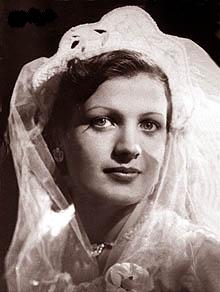The film industry or motion picture industry comprises the technological and commercial institutions of filmmaking, i.e., film production companies, film studios, cinematography, animation, film production, screenwriting, pre-production, post-production, film festivals, distribution, and actors. Though the expense involved in making films almost immediately led film production to concentrate under the auspices of standing production companies, advances in affordable filmmaking equipment, as well as an expansion of opportunities to acquire investment capital from outside the film industry itself, have allowed independent film production to evolve.

Youssef Wahba Pasha (1852-1934) was an Egyptian Prime Minister and jurist.

Sandra Nashaat is an Egyptian film director.

Cinema of Africa covers both the history and present of the making or screening of films on the African continent, and also refers to the persons involved in this form of audiovisual culture. It dates back to the early 20th century, when film reels were the primary cinematic technology in use. During the colonial era, African life was shown only by the work of white, colonial, Western filmmakers, who depicted Africans in a negative fashion, as exotic "others". As there are more than 50 countries with audiovisual traditions, there is no one single 'African cinema'. Both historically and culturally, there are major regional differences between North African and sub-Saharan cinemas, and between the cinemas of different countries.

Talaat Harb Pacha was a leading Egyptian entrepreneur and founder of Banque Misr, and its group of companies, in May 1920.

Banque Misr is an Egyptian bank co-founded by industrialist Joseph Aslan Cattaui Pasha and economist Talaat Harb Pasha in 1920. The government of the United Arab Republic nationalized the bank in 1960. The bank has branch offices in all of Egypt's governorates, and currency exchange and work permit offices for foreign workers in Egypt.

Middle Eastern cinema collectively refers to the film industries of West Asia and part of North Africa. By definition, it encompasses the film industries of Egypt, Iran, Bahrain, Iraq, Israel, Jordan, Kuwait, Lebanon, Palestine, Oman, Qatar, Saudi Arabia, Syria, United Arab Emirates, and Yemen. As such, the film industries of these countries are also part of the cinema of Asia, or in the case of Egypt, Africa.

The Egyptian film industry is based mainly in Cairo, which is sometimes referred to as Hollywood of the East or Hollywood on the Nile, despite having its beginnings in the city of Alexandria in the early 20th century. Egypt produces around three-quarters of the Arab world's screen output.
Arab cinema or Arabic cinema refers to the film industry of the Arab world. Most productions are from the Egyptian cinema.

Mary Queeny is the stage name of Mary Boutros Younis, was a Lebanese-born Egyptian actress and film producer.

Downtown Cairo is the colloquial name given to the 19th-century western expansion of Egypt's capital Cairo, between the historic medieval Cairo, and the Nile, which became the commercial center of the city during the 20th century. Given its rich architectural heritage from the era of Khedive Ismail, it has been officially named Khedival Cairo and declared by the government as a protected Area of Value, with many of its buildings also deemed protected. Administratively Wust al-Balad covers areas of qism Qasr al-Nil, and the Abdeen and Ezbekia districts. The protected Khedival Cairo covers a larger area extending south to Sayida Zeinab.

Talaat Harb Street is a historic street in downtown Cairo, Egypt, connecting Tahrir Square and Talaat Harb Square.
Armenak Arzrouni, who worked under the mononym Armand, was a pre-eminent Armenian Egyptian photographer based in Egypt. He specialized in portrait photography, while carving a lucrative niche market. He became highly sought after by the Egyptian upper class and was the first photographer in Egypt to use photography umbrellas.

Misr lel-Makkasa Sporting Club, commonly known as Makkassa, is an Egyptian sports club based in Faiyum, Egypt. The club is related to Misr lel-Makkasa Company.
The Misr Spinning and Weaving Company is a large textile company located in El-Mahalla El-Kubra within the Nile Delta of Egypt, approximately 80 kilometers north of Cairo. It is a state-owned enterprise held by the Holding Company for Cotton, Spinning, Weaving and Garments. Egypt's largest industrial facility employs over 25,000 workers, many of whom have played an active role in Egyptian labor struggles. Large protests and strikes at Misr Spinning and Weaving since 2006 contributed to the collapse of the Mubarak government, the 2011 Egyptian revolution, and the Arab Spring more generally.
Helmy Rafla was an Egyptian film director, screenwriter, film producer, and make-up artist. He is considered one the most prominent Egyptian filmmakers.
Niazi Mostafa was an Egyptian film director. Mostafa was born on 11 November 1911 in the city of Asyut, Khedivate of Egypt to a Sudanese father and Turkish mother. Mostafa would complete his university studies in Germany and joined the German Film Institute, he then returned to Egypt to work as an editor at Studio Misr.

Café Riche which opened in 1908 at 17th of Talaat Harb Street, is one of the most renowned landmarks in downtown Cairo. At various times a meeting place for intellectuals and revolutionaries, the café witnessed many historically significant events over the 20th century. It is said to be where King Farouk saw his second wife, Nariman Sadek; where the perpetrator of the 1919 failed assassination attempt on Egypt's last Coptic Prime Minister, Youssef Wahba Pacha lay in wait for his target; and where several members of the resistance during the 1919 revolution met the basement to organize their activities and print their flyers. Patrons included the political novelist Naguib Mahfouz and the then-future president Gamal Abdel Nasser.
Egyptian Acting and Cinema Company, or Sharikat misr lil-tamthil wa al-sinema, also known as Misr Company for Acting and Cinema (MCAC), was a film production company founded in 1925 by economist Talaat Harb. It was a prelude to Harb's establishment of Studio Misr.

Laila is a 1927 Egyptian silent film directed by Stephan Rosti. It stars Aziza Amir, Stephan Rosti and Assia Dagher. It is the first feature-length Egyptian film.












